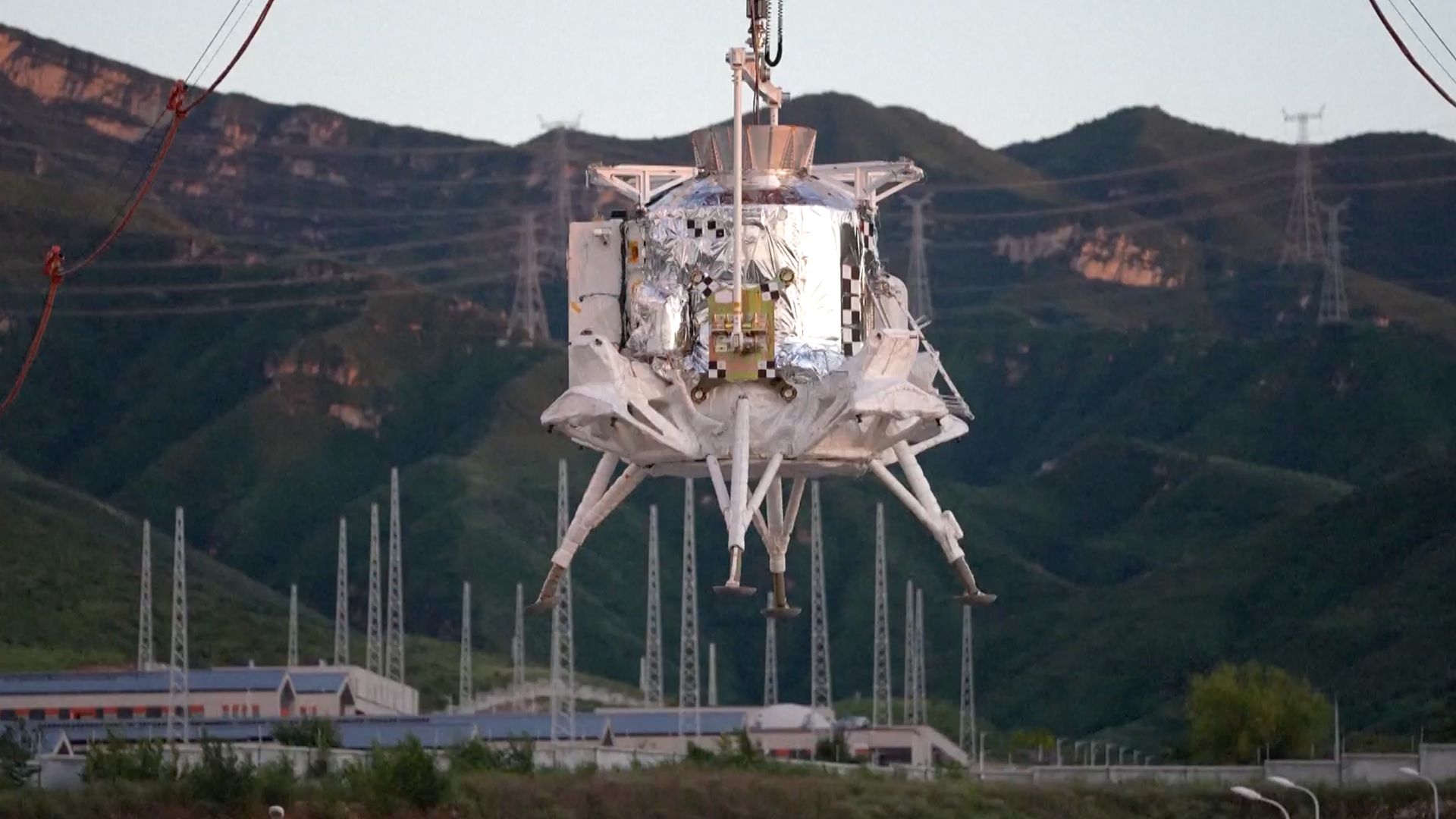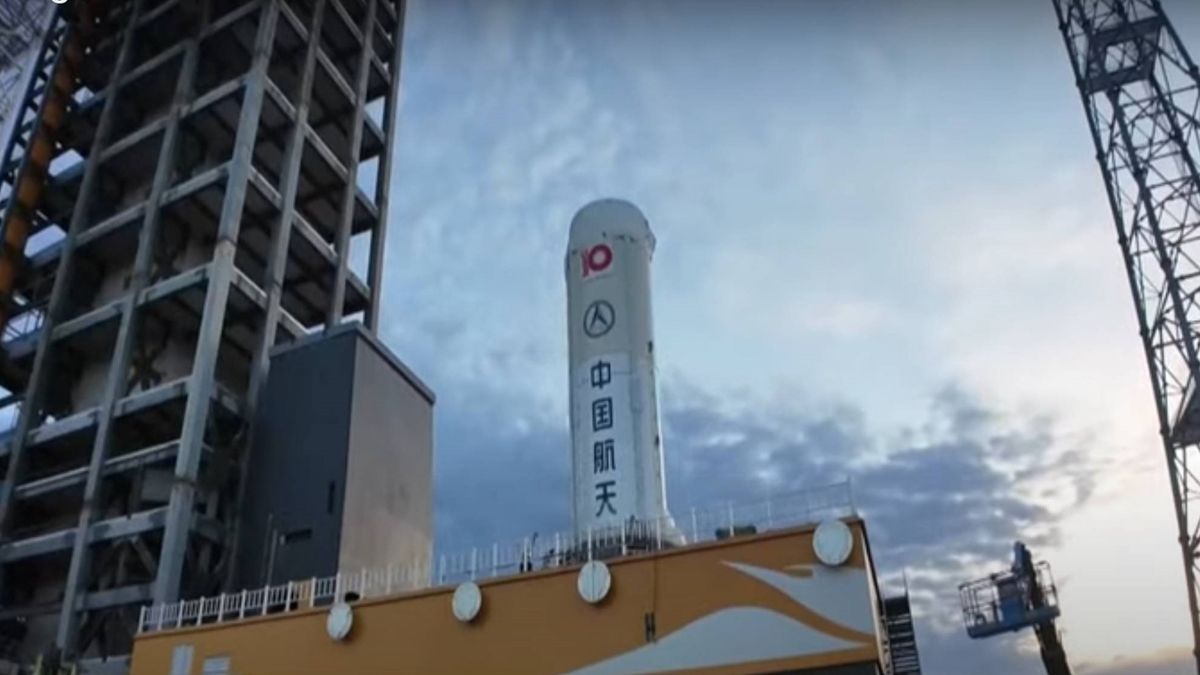Follow us on Google News (click on ☆)
The country conducted a major test of the first-stage propulsion system of the Long March 10 rocket in August 2025. This launcher, essential for crewed missions to the Moon, uses seven YF-100K engines running on liquid oxygen and kerosene. The generated thrust reached nearly 1,000 tons (about 2.2 million pounds), a record for the Chinese space program, thus validating the reliability of this technology.

Test of takeoff and landing of China's Lanyue lunar module on August 6, 2025.
Credit: CCTV
Another important milestone was the emergency escape test of the Mengzhou spacecraft in June 2025. This rescue system, the first of its kind in 27 years, demonstrated its ability to protect astronauts in case of a launch emergency. The return capsule successfully separated and landed safely using parachutes and airbags.
The Lanyue lunar module also underwent landing and takeoff simulations at a special site in China. These tests verified navigation, control, and propulsion procedures, crucial for operations on the lunar surface. Lanyue will serve as a base for astronauts' activities, providing energy and life support.
Lunar space suits were presented last September, designed to withstand the hostile environment of the Moon. They incorporate protective materials against lunar dust and extreme temperatures, with flexible gloves and a helmet with a panoramic visor. This equipment will allow astronauts to move and work effectively on the lunar surface.
The Chinese space agency continues its developments to achieve its goal by 2030.

Test of the first-stage propulsion system of the Long March 10 rocket on August 15, 2025.
Credit: CCTV
How do rocket engines like the YF-100K work?
Liquid propellant rocket engines, such as the YF-100K, use a combination of oxidizer and fuel to generate thrust. In this case, liquid oxygen and kerosene are mixed and burned in a combustion chamber, producing hot gases expelled at high speed.
This process relies on Newton's action-reaction principle: the ejection of gases backward propels the rocket forward. Efficiency depends on factors such as the mixture ratio and the nozzle design, which optimizes gas expansion.
Gimbaled engines, like three of the seven YF-100K, allow control of the rocket's direction by changing the thrust angle. This capability enables in-flight maneuvers and trajectory adjustments during space missions.
Ground tests, like the one conducted for the Long March 10, validate the reliability and performance of these systems under simulated conditions, reducing risks before actual launches.